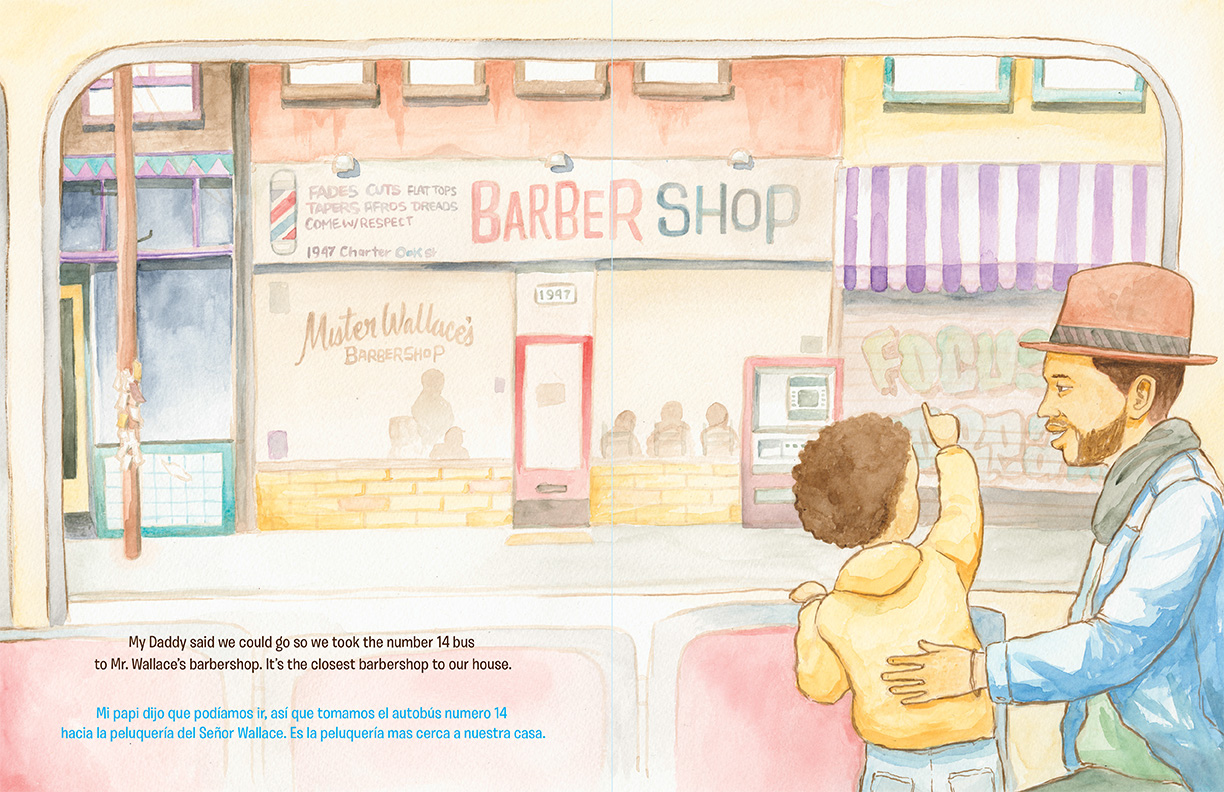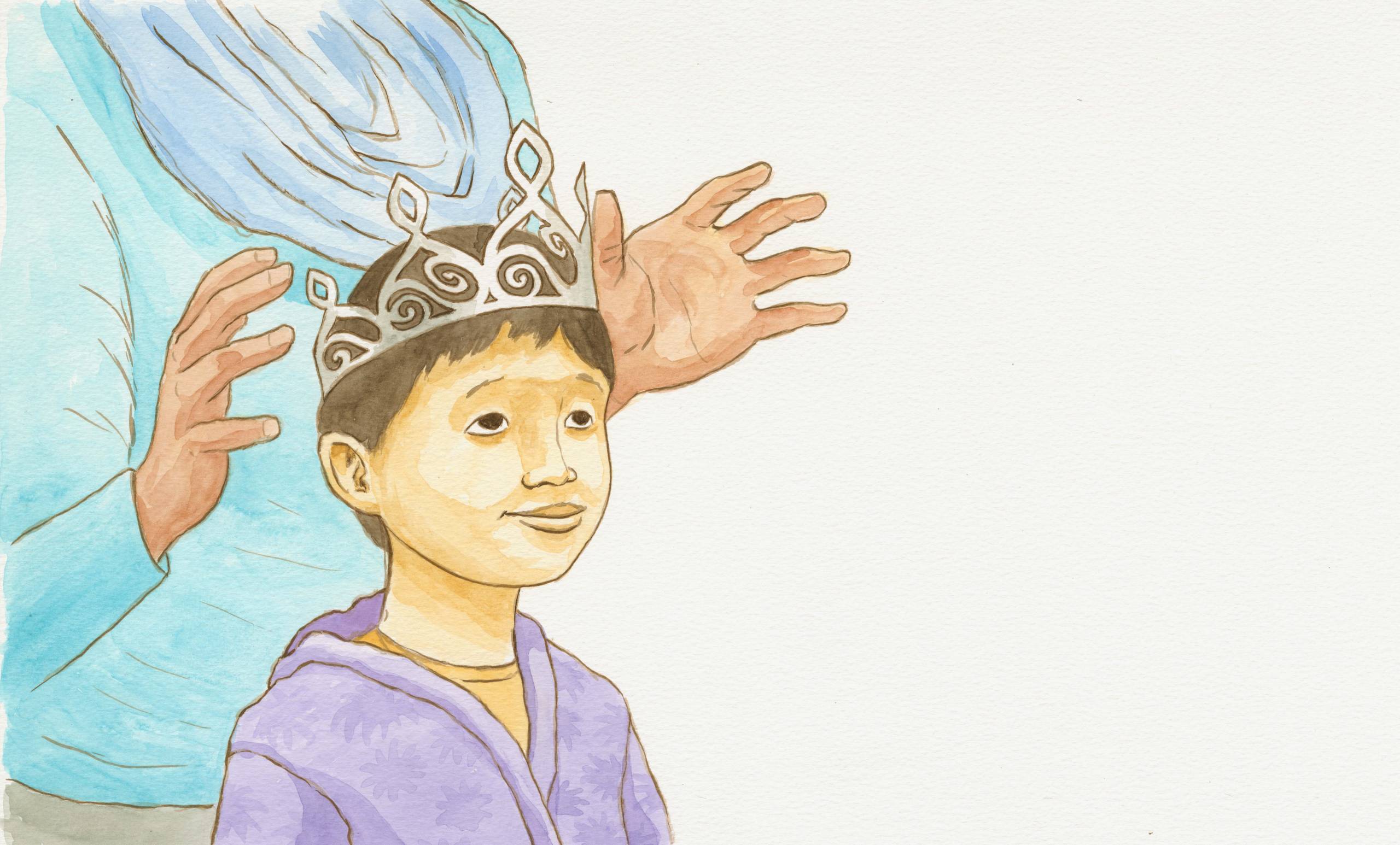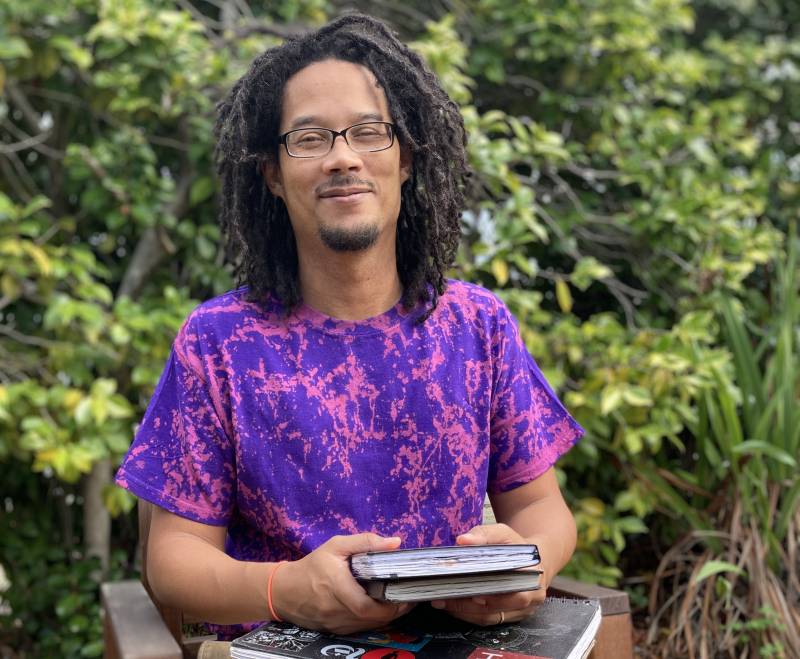Hey Rightnowish listeners, you can help shape the future of the podcast! Just fill out a short survey.
Growing up, Robert Liu-Trujillo didn’t see himself represented in the books he read. So after he became a dad, he wanted to make sure his son would have stories to relate to. Liu-Trujillo set forth on a path to fill the void. And in doing so, he’s contributed to the effort to raise youth of color with culturally relevant and socially conscious kids books.
Initially an illustrator, he became a children’s book author and has now published eight bilingual books, and has contributed to numerous other works.
Liu-Trujillo uses watercolors to create everyday scenes that are both bright and earthy. His characters are from cultures and communities that have been historically overlooked in the American early childhood literature circles. In making books that are more reflective of kid’s like his own, his books are written in English and Spanish.

Liu-Trujillo, who grew up in the East Bay, isn’t alone in this push to diversify “kid lit.” He’s a part of a collective of authors and creators, many of whom participate in the Social Justice Children’s Book Holiday Fair in the Bay Area.
He sees his work, and the work of his peers, as an essential effort to combat larger issues like low literacy rates, discrimination, and low self esteem.
With the historical evidence that people of color aren’t proportionately represented in children’s books, and the ongoing fight to ban certain books that address race and LGBTQ+ identity in places like Texas and Florida, it’s extremely clear why his work is important right now.
This week we talk to Robert Liu-Trujillo about his craft, and how his work is creating a future where more young people see themselves represented.

Below are some lightly edited excerpts of the episode with Robert Liu-Trujillo.
Pen: When you made the decision to be a children’s author, you were taking in a lot of books. What were some of those foundational titles?
Robert: There was a lot of visuals that spoke to me. Kadir Nelson is an incredible oil painter, and he does things that are very realistic and things that are kind of exaggerated. He had stories that a lot of times were about Black history, sometimes about historical figures or times in slavery, but were very imaginative stories as well. I don’t think I could ever paint like him, but it inspired me to want to catch someone’s eye the way it caught my eye.
Pen: On the writing side of things, Robert says that he got his inspiration to write stories for his drawings after reading the work of a legendary science fiction author.
Robert: Octavia Butler. When I was a kid, my mom was reading her, and she was like, You should check her out. And I was like, ‘Whatever, Mom.’ And I just for whatever reason, as a kid, I just wasn’t trying to hear it. And then as she started to get more popular, this is maybe around the mid 2000s, I was like, ‘Let me go back and read this.’ I was just blown away!
Pen: Your latest book, We Are Yoga, Somos Yoga. What was the process in creating that one?
Robert: Jill Guerra is a mindfulness and yoga teacher. She got an idea for doing a book where she basically explains what the poses are because a lot of people are with it and they’re like, “Yeah, this is dope! I can’t wait for my kid to do that.” And other kids are like, “Is this the devil?” It’s not only for parents but for educators to kind of share. ‘This is what the name of the pose is, this is what you do.’ It’s in English and Spanish.

Pen: As of late, I’m seeing a lot of calls for activism. And some of that activism is surface level and some of it is deeply rooted in community. How do you use suss out a good book about activism for children?
Robert: I think the great place to draw the line for children is to show them not just beliefs, but action. Who are we bringing the fight to and why? And so I love when kids’ books can kind of throw that in there and and not hit you over the head with it. Again, we’re not trying to like make kids be professors when they’re children. It should be something they read and enjoy. But it should also challenge them and their parents.

Rightnowish is an arts and culture podcast produced at KQED. Listen to it wherever you get your podcasts or click the play button at the top of this page and subscribe to the show on NPR One, Spotify, Apple Podcasts, TuneIn, Stitcher or wherever you get your podcasts.


